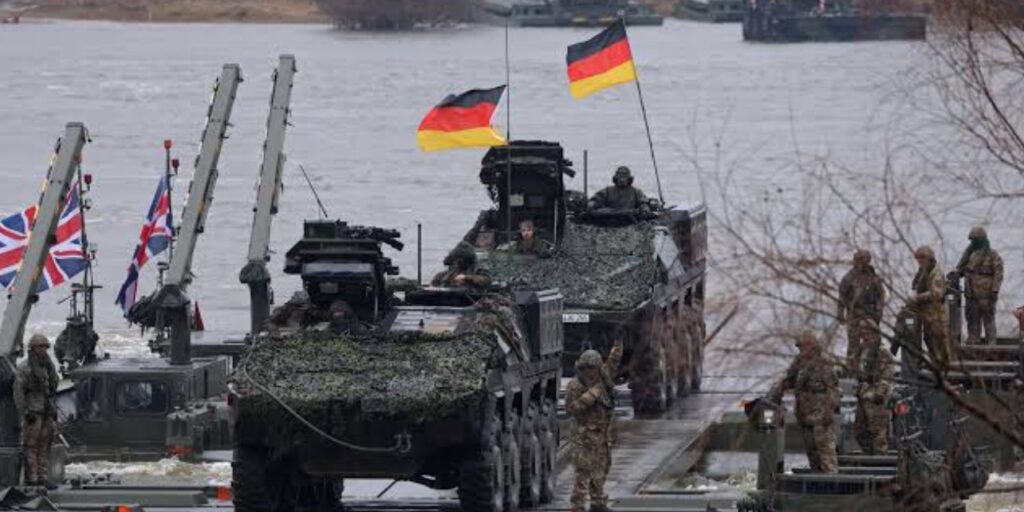The United Kingdom and Germany have strengthened their defence partnership through a new bilateral agreement focused on enhancing military bridging capabilities. The UK Ministry of Defence announced the collaboration on 15 April, highlighting a joint commitment to advancing critical mobility systems within NATO.
A “Letter of Intent” was signed this week by UK National Armaments Director Andy Start and German Vice Admiral Carsten Stawitzki, pledging ongoing cooperation on two major projects: Wide Wet Gap Crossing (WWGC), also known as Project TRITON, and the General Support Bridge (GSB), or Project TYRO.
Project TRITON: Joint Bridging Force for NATO Operations
Project TRITON involves the development of a modular and scalable bridging and ferrying system capable of spanning wet gaps over 40 metres. The system will be delivered by a UK-German multinational bridging battalion based in Minden, Germany, meeting NATO’s operational requirement for wide wet gap crossing capacity.
Project TYRO: UK-Manufactured Rapid Deployment Bridges
Project TYRO focuses on the British-produced General Support Bridge (GSB), manufactured by KNDS in Stockport. The GSB can be deployed in under 90 minutes and supports all current NATO main battle tanks, including the Challenger 3. Germany has committed to procuring the GSB system to ensure operational compatibility with UK forces.
Building on the Trinity House Agreement
This new initiative expands on the Trinity House Agreement, signed in October 2024, which pledged broader UK-Germany cooperation in response to evolving security threats, particularly following Russia’s invasion of Ukraine. The new bridging projects aim to increase interoperability and enhance rapid mobility for NATO forces.
By aligning their engineering capabilities, both countries seek to strengthen collective defence readiness and ensure their armed forces can swiftly respond to threats across the European theatre.


